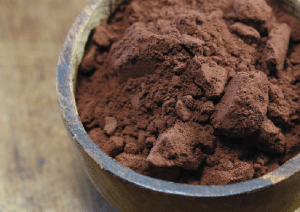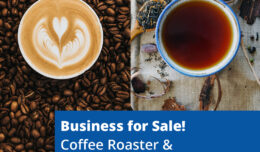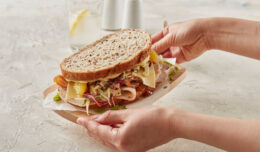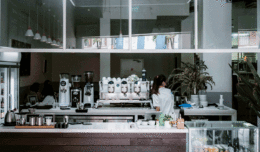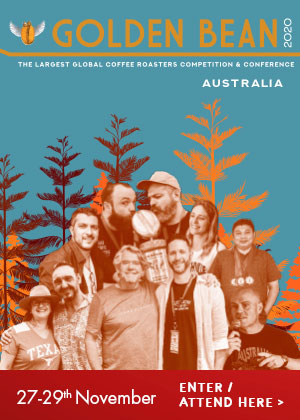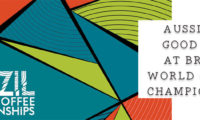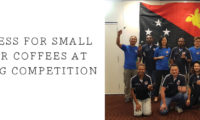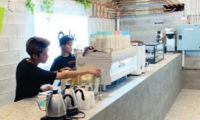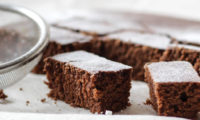The Greek term theobroma (Cocoa plant) literally means “food of the gods”.
At this time of year your hot chocolate sales should be hitting an all time high. Now is the time to supply your customers with the most delicious, high quality and interesting products that keep them coming back. By promoting the story behind your product and educating your customers, you can make them feel a part of your business and your passion. Chocolate has many different flavour profiles. It comes in many forms and from many origins; there’s a lot more about it that can make an interesting addition to the usual hot chocolate offering on your beverage menu.
Café Culture recently came across one of Australia’s few cocoa bean importers that is creating bean to bar and whole bean hot chocolate. It’s the perfect time of year to catch up with Peter Mengler from Cravve Chocolate to uncover a few secrets about the food of the gods.
Peter, how did you get started? How did your passion for chocolate evolve?
I guess I was born into the food industry; my family started growing grapes in the Barossa Valley around 1832. So, it was a natural progression from vineyard to beverage industry as a process engineer/ food technician in fruit, dairy, confectionery and wine making. Over the years I have worked on different chocolate projects in a variety of applications, but it wasn’t until around 1999 that I focused solely on chocolate and tea. At the time, drinking chocolate powder in cafés was very limited, so my thinking was, why make a great cappuccino or mocca, then top it with a cheap, dull flavoured chocolate? So, single origin chocolate was born.
Can you please briefly explain the basics of processing chocolate from bean to cup?
Typical drinking chocolate is made with cocoa powder, which is the powder residue left after the cocoa mass and cocoa butter have been removed. Bean to cup involves roasting to enhance the flavours of the whole bean for drinking chocolate. A low roast produces more acidic fruit flavours (passionfruit/raspberry), higher roasts produce nutty flavours – think hazelnut or almond. To reveal the fine flavours of the bean, a further process of refining and conching on black granite is used to remove the aromatic bitter components. This is a process combining temperature, shear and time, usually from 20 to 96 hours.
Your company offers quite a few different chocolate products. What is the difference between these/what are they used for?
Chocolate Bar: We offer a range of 30 g dark chocolate bars crafted from different Pacific Island cacaos, ideal for pairing to specialty coffees.
Couverture Chocolate: Whole bean dark chocolate from Pacific cacao in a range of origins and cocoa percentages from 54 to 99%. Can be used for eating and drinking.
Cocoa Liquor: This is 100% pure Pacific Island heritage cacao sourced from the different islands and cacao tree varieties Criollo, Trinitaro or Forastero Amelonado.
Used to make your own chocolates. Quality depends on how much sugar and other flavours may be added to it.
Cooking Chocolate: Similar to liquor but in lower cocoa percentages 70-100% and refined to 20 micron. The smaller the micron number, the finer the chocolate crystals. The human palate senses below 15-20 micron as creamy or buttery.
Drinking Chocolate: We manufacture 3 types of chocolate powder based on cocoa powder of different origins.
Sipping Chocolate: A blend of cocoa powder and cocoa liquor in dark percentages of 54 to 80%.
100% cocoa mass: same as liquor.
How do you source your cocoa beans? Do you travel to origin, visit the farms and buy cocoa beans direct? Are they pulped/processed at the farm and then shipped in hessian bags like green coffee?
To date, we’ve been able to mainly source beans from industry contacts I’ve known for years, and we are fortunate to have regular visits from our grower suppliers; in this way, they understand the quality and flavour aspects we seek. We mainly deal direct with growers or grower groups, and the beans are pulped, fermented and sun dried on the farm; it’s a 6-10 day process. Beans are then graded, sorted bagged and shipped. We prefer a bean count of 80-90 per 100 g and a ferment of 5-7days.
Single origin/blends – is this similar to coffee? Are most chocolates blends?
Very similar to coffee, most chocolate is a blend. We, however, produce single origin or single plantation un-blended chocolate only. Again, I’m looking for the underlying natural flavour profile to bring to life. Blends are usually too complex and end up being a mish mash of flavour. A good bean, for example, might start with a nice liquorice, coffee flavour drifting to roasted hazelnut with a finish of raisin and honey.
Why do you specialise in South Sea chocolate?
The South Sea cacaos have an interesting history, with the first known plantings by the Spanish in 1560. Over the centuries, early Dutch, German, French and Spanish settlers added various rootstock from South America. With plantations from Fiji to Vietnam, this provides a diverse region of terroir to develop exquisite origin chocolate. These are heritage plantations worth preserving, and our island cousins can earn higher income from fine flavour grade rather than bulk grade. It’s also right on our doorstep to be appreciated.
You seek cocoas of exceptional flavour profiles, including organic and rare heritage varieties. Please explain …
The first plantings were Criollo, followed by Trinitaro and Forastero – the first two being fine flavour cacao. With the warm, sea air and rich, volcanic soils, the flavours developed are strong and diverse. Strawberry and cream, licorice, hazelnut, almond, coffee, cinnamon, clove, passionfruit and banana are just a few of the flavour compounds found in these cacaos. As the islanders can’t afford sprays or fertilisers, the trees grow in a semi wild state on very small farms of 1 or 2 acres. This adds further to the flavour development; as with wine, trees grown under natural rainfall develop more intense flavour. My philosophy is “less is more”.
Cacao from PNG and Java have a strawberry and cream profile, Solomon Island fresh lime/raspberry, Fiji spices of cloves, cinnamon, anise, from Samoa nut flavours of hazelnut, almond and peanut, so the diversity of flavour a chocolate maker has to work with from the Pacific really doesn’t get much better. As a comparison, you’d need to get beans from Venezuela, Bolivia, West Africa, Tanzania and Madagascar to find just some of these flavours.
Tell us a little about the Bougainville cocoa beans. i.e. first in 30 years due to civil unrest.
Civil conflict started in Bougainville in 1989 and developed into a civil war in 1990. All the cocoa plantations were abandoned during this era. In 1997 a ceasefire was established, and the process of re-building the cocoa industry started around 1999-2000. With aid from Australia via Austaid, 20 million cocoa trees were distributed throughout the island group. Further on farm support by Pardi and other aid groups provided fermenters and solar driers over the next 10 years, until we reached the point where the trees are now old enough to provide fine flavour, enabling Bougainville to regain its status of fine flavour grade cacao. I have been lucky enough to get some of the first shipments from Rugen and Numu Numu Plantations. The adjoining plantation of 12,000 hectares owned by Brisbane based Mantle Group will be supplying the market soon.
What are your thoughts on the health benefits of chocolate? Caffeine levels etc.
Chocolate, like coffee and wine, contain natural feel good compounds. In chocolate’s case, theobromine + Phenethylamine (PEA), which is the same chemical our bodies release when we fall in love. But, it also has high levels of antioxidants and 750 other vitamins, minerals and flavour compounds, all of which in a balanced diet have health benefits.
How best would you suggest your café owners promote chocolate in store?
Take it from the back shelf and bottom of the menu and put it up front, you can’t sell or promote what’s not seen. The next step is to bring hot chocolate up to the café standard today’s consumers expect. I don’t mean some powdered product where you just add milk, as really you are asking consumers to pay $4 for the equivalent of instant coffee they can make at home.
Forget mugs: use 6 or 8oz cups, whole bean chocolate melted and topped with a nice textured milk and shaved couverture. It’s that simple.
We now have a product to be proud of and a healthy bottom line.
Peter Mengler M: 0417 797 770
W. www.beanandleaf.com.au


